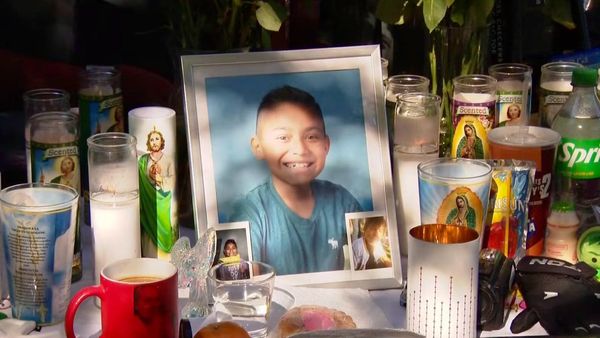Every now and then, certain decorating fads sweep through the Capitol’s corridors of power.
Like dorm room decor, the flags, posters and signs that members of Congress display outside their offices can tell you a lot about who works (and sometimes sleeps) inside. If you see a Gadsden or Pine Tree flag, you can bet it’s a Republican; if there’s a rainbow flag, you can assume it’s a Democrat.
Handwritten sticky notes mark the doorways of some younger progressives, while Rep. Bill Huizenga, R-Mich., greets you with a fact about his district. (Did you know it’s home to the only authentic and fully functioning Dutch windmill in the United States?)
Doors are hung with pennants, dried peppers and mezuzahs. Some announce the office “belongs to the voters,” and if a member has a dog, a sign may alert you as to whether the pup is (or isn’t) inside.
Recently, Roll Call reporters noticed another, less cuddly sign popping up on member office doors: signs forbidding visitors from filming or recording.
In total, at least 16 members have signs discouraging photography, filming or recording hung just outside their offices. Walking up and down the halls of buildings on the House side earlier this month, we counted 12 Republicans and four Democrats: Aaron Bean, R-Fla.; Darrell Issa, R-Calif.; David Valadao, R-Calif.; Erin Houchin, R-Ind.; Gabe Evans, R-Colo.; Harriet M. Hageman, R-Wyo.; Brian Mast, R-Fla.; Morgan Griffith, R-Va.; Richard Hudson, R-N.C.; Russell Fry, R-S.C.; Tom Barrett, R-Mich.; Virginia Foxx, R-N.C.; Nancy Pelosi, D-Calif.; Lucy McBath, D-Ga.; Rick Larsen, D-Wash.; and Susie Lee, D-Nev.
Some of the signs are little more than a piece of paper taped to the door. “NO PHOTOS OR VIDEOS ALLOWED INSIDE WITHOUT PRIOR AUTHORIZATION,” one seems to shout at visitors to Foxx’s office. Others are framed, polite statements written under the House seal, like Bean’s: “It is the policy of Congressman Aaron Bean that members of the public are not permitted to audiotape, videotape, live stream or take still photographs in this congressional office without prior authorization from the Congressman or a designated staffer. Any individual who violates this policy will be asked to leave the premises.”
It’s hard to say where this trend started, or how new it really is. Roll Call reached out via email to ask when and why the policies began, but most of the offices did not respond.
Pelosi’s office confirmed that the sign had been up “since at least 2019” but declined to provide any more information. In 2018, environmental activists, along with Rep. Alexandria Ocasio-Cortez, D-N.Y., flooded Pelosi’s office to demand action on climate change.
An Issa staffer replied via email that the sign had been up “at least 2-3 years” and that no incident precipitated its hanging. “We think it’s the best arrangement for discussions in the office,” said spokesman Jonathan Wilcox. “I don’t know of anyone who has complained. Seems like it makes sense to everyone I’ve seen.”
Some offices, like Hudson’s and Lee’s, specifically mention “constituent privacy” on their signs. A staffer for Lee said their policy wasn’t a strict recording ban but rather a mere request that visitors ask first before rolling.
“Every day, constituents share personal information with our team so we can help them solve issues related to the federal government. As our sign indicates, visitors to our office are more than welcome to take pictures and videos, but are asked to let our team know ahead of time so we can prevent constituents’ private information from being made public,” spokesman Chris D’Aloia said in a statement.

One House chief of staff, speaking anonymously because they weren’t authorized to discuss this topic, said it was their own policy, not the member’s idea, that they brought to the office as a best practice to protect employee and constituent privacy.
The notices posted by Bean, Mast, Larsen, Lee and Houchin all specifically mention “live streaming,” which provides a clue to why the policy may exist. In recent years, political activists have made a habit of filming members as they confront them in person, sometimes going viral.
Transparency advocates have long defended the importance of public access to the congressional office buildings, which flank the Capitol itself and provide workspaces for members of Congress and their staff. When security officials scaled back access for visitors during the pandemic and after the attack of Jan. 6, 2021, some activists and constituents complained that it meant they couldn’t reach their representatives in the same way.
After Republicans regained control of the House in 2023, they eased pandemic-era restrictions and touted the reopening of the “people’s House” — often with signs plastered on their office doors, some of which you can still find today. Visitors could once again enter the House office buildings without an escort. But lawmakers also have wide leeway to set their own policies within their own workspaces.

The 16 anti-recorders we spotted run the ideological, age and tenure gamut. The living embodiment of a “San Francisco liberal,” 85-year-old Speaker Emerita Pelosi has been on the Hill since 1987, while swing-district Republican Barrett, 44, is just five months into his first term. But Roll Call did notice one connection among them: They tended to be office neighbors.
Most members who posted a no-recording sign were joined by at least one other on their office building floor. Foxx, Valadao and Bean, for example, are all on the fourth floor of the Rayburn House Office Building. The first story of Rayburn had the most of any: Mast, Issa, Griffith, Hudson and Larsen. And similar clusters were found in the Longworth and Cannon House Office Buildings.
The list covers only House members who have signs outside their Hill offices; we did not enter the offices to see if there were any posted inside. We also didn’t survey the Senate side, although walking around the glass-enclosed corridors of the Hart Senate Office Building, we noticed more than one placard sitting on a receptionist’s desk asking visitors to keep their cameras shuttered and microphones off.
The post No cameras, please: Some offices in Congress warn visitors not to film appeared first on Roll Call.







